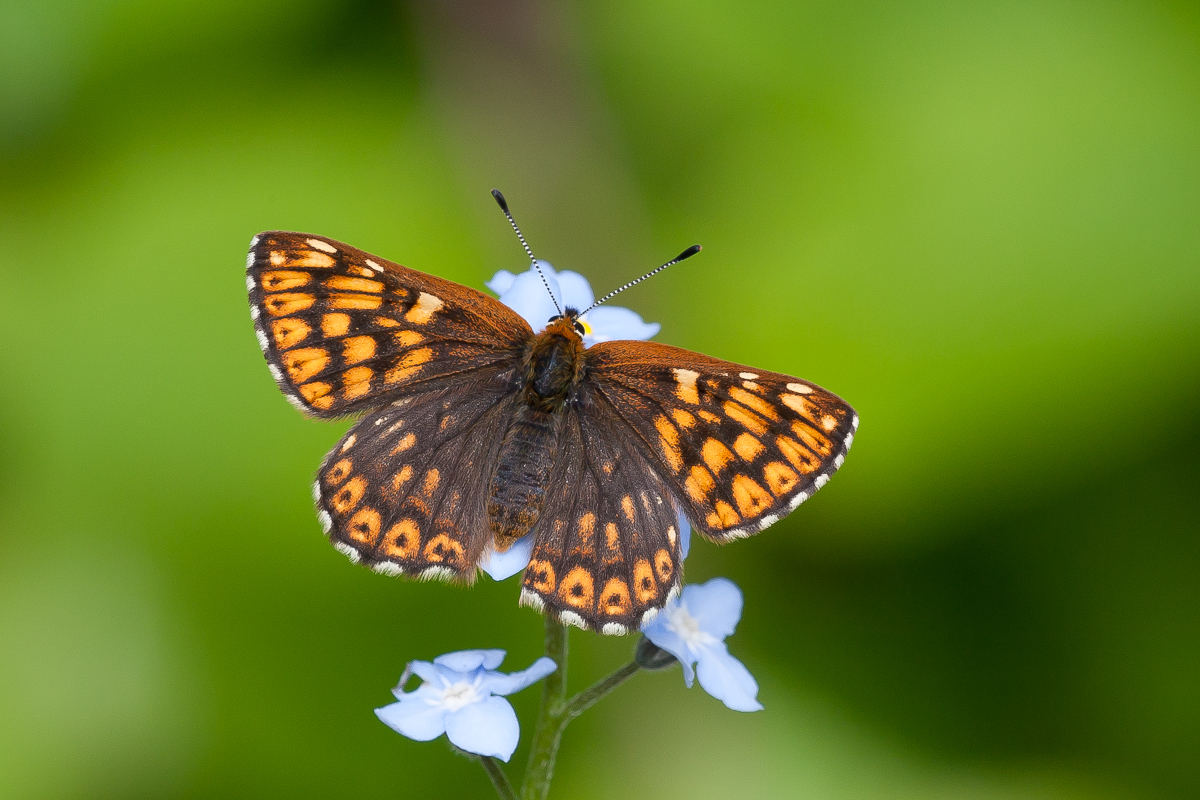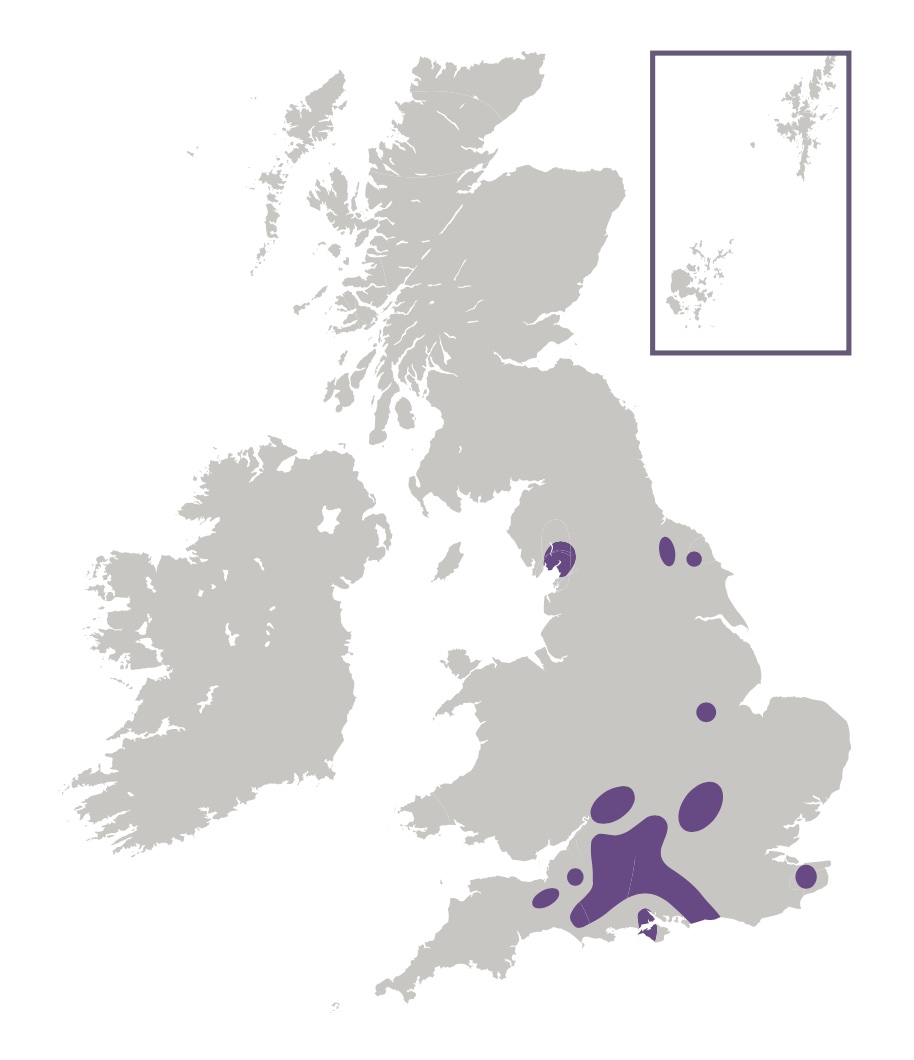
Photo © Peter Eeles
The Duke of Burgundy is the sole representative of a subfamily known as the "metalmarks", since some of its cousins, particularly those found in south America, have a metallic appearance. A curious characteristic of this subfamily is that the female has 6 fully-functional legs, whereas the male has only 4 - the forelegs being greatly reduced. The Duke of Burgundy was once classified as a fritillary, given the similarity with those fritillary species found in the British Isles. This butterfly is found mainly in central southern England, although scattered colonies are found elsewhere such as in the north of England in Cumbria and Yorkshire. This species is not found in Wales, Scotland, Ireland, the Isle of Man or the Channel Islands. Although relatively-large colonies exist, most colonies only contain around a dozen individuals at the peak of the flight season.
The sexes are similar in appearance, although the female tends to have more orange on the wings and rounder tips to the forewings. The male and female can also be distinguished by behaviour. The fast-flying males are extremely territorial and will sit on a favourite perch, darting out to inspect anything that might be a passing female. Once a virgin female is encountered, the two mate without any discernable courtship. This is usually in mid-morning just after the females have emerged. The flight of the female is not as rapid as the male and they are often seen when egg-laying as they move from plant to plant, landing on the edge of a leaf before curling their abdomen to lay on the underside of the leaf.
Adults only occasionally nectar, usually in warmer weather, with Wood Spurge, Buttercup, Hawthorn and Bugle being favourites. Both sexes roost in tall scrub or trees.

This butterfly was, in the past, primarily known as a woodland butterfly, where it fed on Primroses growing in dappled sunlight, with a number of colonies in chalk and limestone grassland. However, the cessation of coppicing in woodlands has had a marked effect on this species, with many woodland colonies dying out as a result. Primrose is used as the larval foodplant in woodland, whereas Cowslip is used on grassland.
Adults feed primarily on buttercups (Ranunculus spp.), hawthorns (Crataegus spp.), Tormentil (Potentilla erecta) and Wood Spurge (Euphorbia amygdaloides).
The primary larval foodplants are Cowslip (Primula veris) and Primrose (Primula vulgaris). False Oxlip (Primula veris x vulgaris) is also used.
